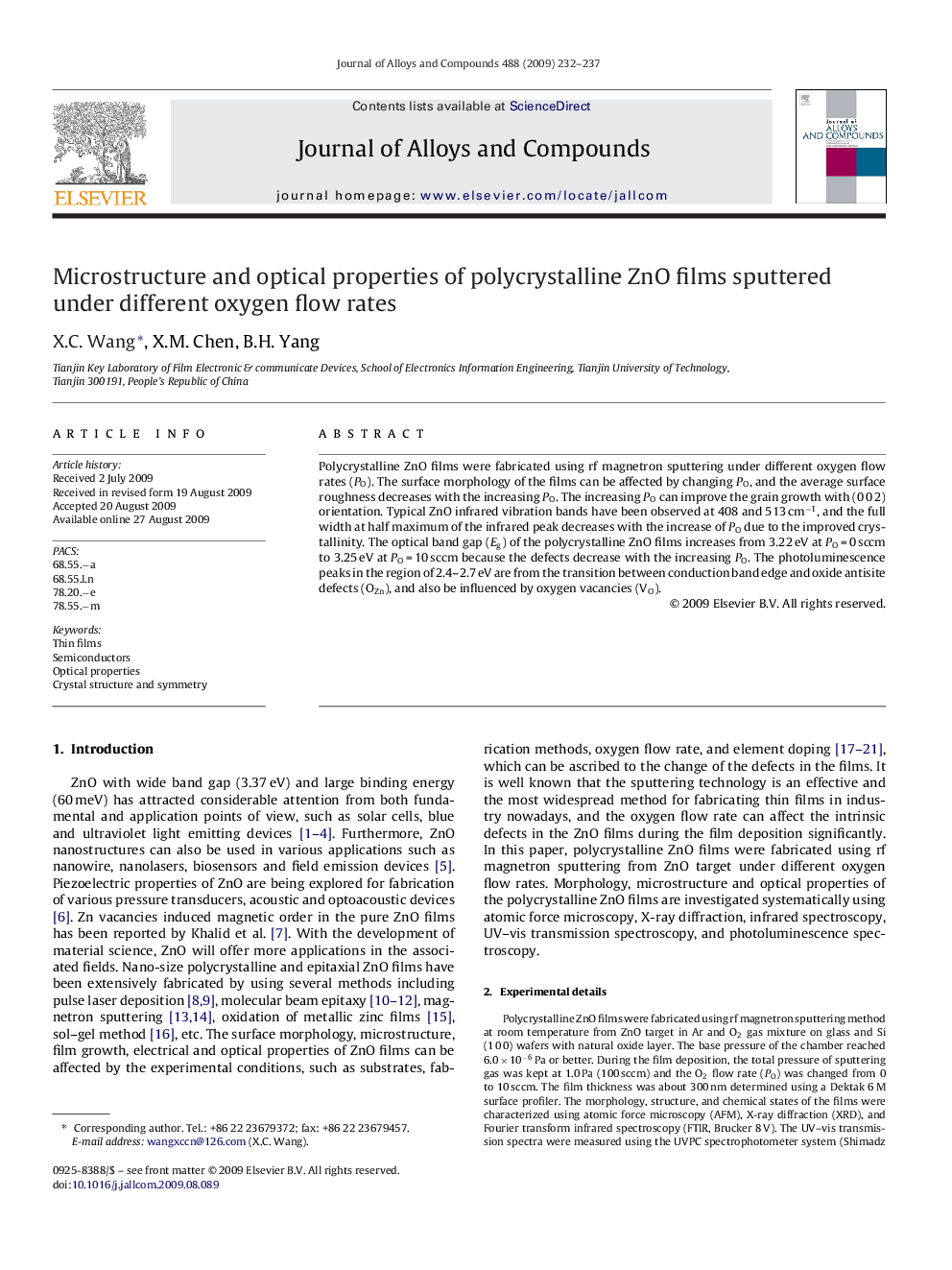| Article ID | Journal | Published Year | Pages | File Type |
|---|---|---|---|---|
| 1621411 | Journal of Alloys and Compounds | 2009 | 6 Pages |
Abstract
Polycrystalline ZnO films were fabricated using rf magnetron sputtering under different oxygen flow rates (PO). The surface morphology of the films can be affected by changing PO, and the average surface roughness decreases with the increasing PO. The increasing PO can improve the grain growth with (0Â 0Â 2) orientation. Typical ZnO infrared vibration bands have been observed at 408 and 513Â cmâ1, and the full width at half maximum of the infrared peak decreases with the increase of PO due to the improved crystallinity. The optical band gap (Eg) of the polycrystalline ZnO films increases from 3.22Â eV at POÂ =Â 0Â sccm to 3.25Â eV at POÂ =Â 10Â sccm because the defects decrease with the increasing PO. The photoluminescence peaks in the region of 2.4-2.7Â eV are from the transition between conduction band edge and oxide antisite defects (OZn), and also be influenced by oxygen vacancies (VO).
Keywords
Related Topics
Physical Sciences and Engineering
Materials Science
Metals and Alloys
Authors
X.C. Wang, X.M. Chen, B.H. Yang,
